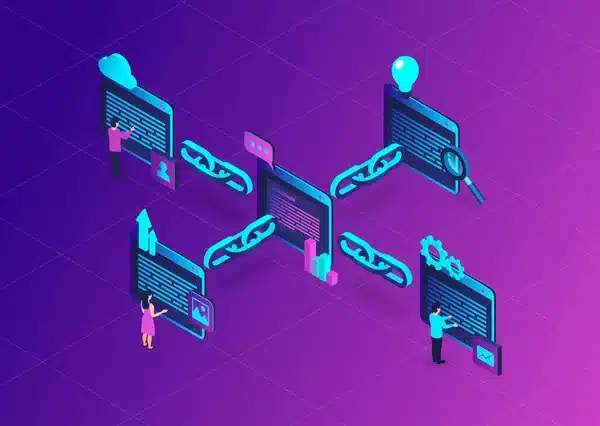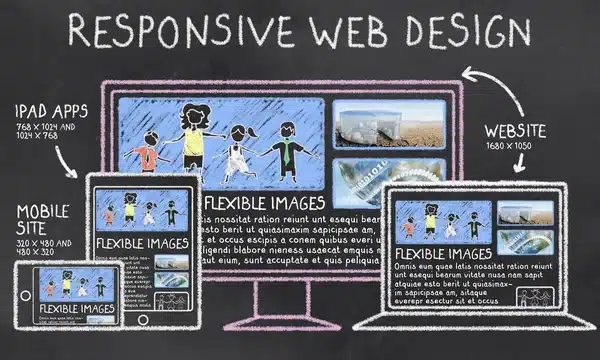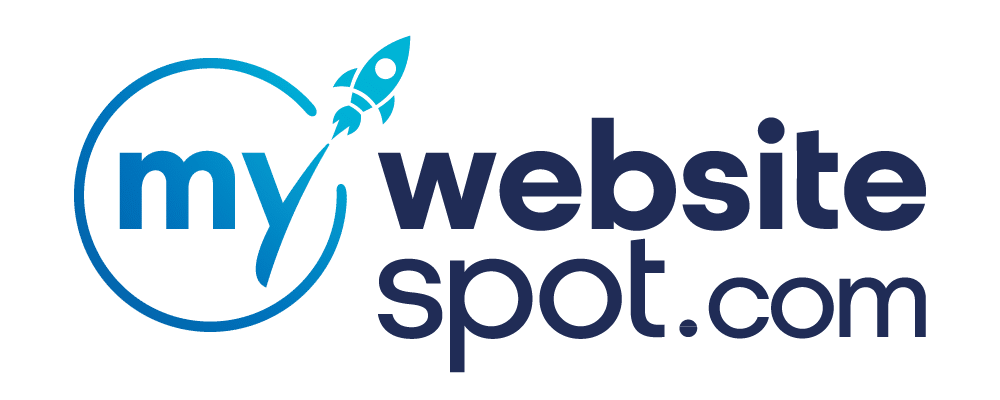In digital marketing, where every click counts, Search Engine Optimization (SEO) is a beacon of hope for website owners who want to improve their organic traffic.
You’ve probably encountered “On-Page SEO” and “Technical SEO.” But what do these terms mean, and how do they differ?
In this guide, we’ll unravel the intricacies of On-Page SEO and Technical SEO, shedding light on their significance and demystifying the jargon that often surrounds them. By the end of this article, you’ll be equipped with the knowledge to make informed decisions and understand why partnering with experts like My Website Spot can revolutionize your online presence.
What is SEO: On-Page, Off-Page, and Technical?
Three core principles underpin the entire SEO landscape: On-Page, Off-Page, and Technical SEO. They form the bedrock of any successful search engine optimization strategy. Each pillar plays a unique role in enhancing your website’s online visibility and driving organic traffic.
On-Page SEO
This aspect revolves around optimizing the content and elements on your website pages. It includes keyword research, meta tags, headers, content quality, internal linking, and user experience enhancements.
- Keyword Research: Identify relevant keywords related to your content and strategically incorporate them within the page’s content, headers, and meta tags. This helps align your content with what your target audience is searching for, ultimately improving search engine rankings.
- Meta Tags and Headers: By crafting compelling meta titles and descriptions and using header tags effectively, you can make your content more attractive to search engine users, increasing the likelihood of clicks and engagement.
- Content Quality: Focus on producing high-quality, informative, and engaging content that visitors find value in. This fulfils your audience’s intent and contributes to higher search engine rankings for similar queries.
- Internal Linking: Incorporating internal links strategically within their website content helps guide visitors to related pages, improving navigation and keeping users engaged longer. As a bonus, these links help Google understand more about your site and is more likely to link your pages to other related queries.
- User Experience Enhancements: Implementing user-friendly features such as fast page loading, mobile responsiveness, and clear site navigation enhances the overall user experience, encouraging visitors to stay longer and explore more content. In turn, your site’s user dwell time increases, indicating to Google that your pages are worth listing on SERPs.

By applying these On-Page SEO techniques, you can create content that resonates with your audience and aligns with search engine ranking algorithms. Your content ultimately tells Google that users like your site and drives more organic traffic your way.
Technical SEO
This pillar ensures that your website’s technical aspects are in tip-top shape to provide an optimal user experience. It involves optimizing site speed, mobile-friendliness, URL structure, fixing crawl errors, and implementing structured data.
- Site Speed Optimization: According to Forbes, 40% of users will abandon a website if it takes longer than three seconds to load. Look into image compression, minification of scripts, and content delivery network (CDN) usage to boost your site’s loading speed. This creates a smoother experience for visitors and improves search engine rankings.
- Mobile-Friendliness: Embrace responsive design principles and thoroughly assess your website’s functionality across diverse mobile devices. This guarantees mobile users a smooth and user-friendly browsing experience, a factor highly regarded by search engines. Notably, according to Broadband Search, individuals interact with their phones an average of 2,617 times daily, underlining the significance of mobile accessibility.
- XML Sitemap Creation: Building an XML sitemap and submitting it to search engines helps ensure that all pages are indexed correctly. This improves discoverability and ensures that search engines can effectively find and rank their content.
- Structured Data Implementation: In simple terms, structured data implementation is like adding labels or tags to specific parts of your website’s content to help search engines understand what that content is all about. Think of it as providing extra information about your content in a way that’s easy for search engines to read. This can result in more informative and visually appealing search results, known as rich snippets, which can help your website stand out and attract more visitors.
- Crawl Error Resolution: Regularly monitor and address crawl errors, such as broken links or inaccessible pages. Working links show that you maintain a clean and efficient website structure, making it easier for search engines to navigate and index your content.

- SSL Certificate Installation: An SSL certificate is like a digital padlock for your website. Having it means that the information shared between your website and your visitors is encrypted and secure. It turns a regular “http” website into a secure “https” one. This security ensures that personal data, like login credentials or credit card information, stays safe when people interact with your site, building trust and confidence among your visitors.
By applying these Technical SEO techniques, website owners can ensure that their website is technically sound and primed for optimal performance in search engine rankings, ultimately leading to increased organic traffic and improved user experiences.
Off-Page SEO
Unlike On-Page and Technical SEO, Off-Page SEO deals with factors outside your website. It primarily involves building high-quality backlinks from authoritative sources and generating online buzz through social media and other platforms.
- Building High-Quality Backlinks: Actively reach out to reputable websites within your niche and request backlinks to your own content. Create exceptional content that naturally attracts backlinks from authoritative sources, demonstrating your expertise and building trust in the eyes of search engines.
- Social Media Engagement: Sharing your content on social media platforms, interacting with your audience, and encouraging social sharing, can amplify your online presence. This drives direct traffic and indicates to search engines that your content is relevant and popular within your industry.

- Influencer Partnerships: Collaborating with influencers or thought leaders in your niche can help your site gain exposure to wider audiences. Influencers can share your content or mention your website, increasing credibility and potential backlinks.
- Online PR: Generating online mentions through press releases, guest posts, or interviews in reputable publications can boost your website’s authority and online reputation. Search engines recognize these mentions as signals of trustworthiness.
- Guest Posting: Contribute guest posts to authoritative websites within your niche. This shows your expertise and provides opportunities for valuable backlinks from sites that publish your content.
By proactively engaging in these Off-Page SEO practices, you can establish your website as a credible and influential player in your industry. It translates into improved search engine rankings and increased organic traffic.
Is Technical SEO Part of On-Page SEO?
No. But technical SEO is a closely intertwined component of your overall SEO strategy.
On-page SEO primarily focuses on optimizing individual web pages to rank higher in search engine results. It encompasses elements you can directly control on your webpage, such as content quality, keyword usage, meta tags, and internal linking.
Essentially, On-page SEO revolves around enhancing the user experience and making your content more attractive to both visitors and search engines.
Technical SEO, on the other hand, deals with the behind-the-scenes aspects of your website’s performance. It ensures that search engine crawlers can easily access, index, and understand your site’s content. Technical SEO tackles issues like website speed, mobile-friendliness, schema markup, and XML sitemaps.
While Technical SEO doesn’t directly impact your content as On-page SEO does, it supports your overall SEO efforts.
The Three Pillars of Technical SEO
Now, let’s delve deeper into the realm of Technical SEO.
Within this domain, three essential pillars form the bedrock of an effective SEO strategy. These pillars play a pivotal role in optimizing your website’s technical aspects, ensuring search engines can crawl, index, and rank your content efficiently.
Website Performance
A swift-loading website doesn’t just contribute to a better user experience but also has a direct impact on your search engine rankings. Sluggish websites tend to result in higher bounce rates, which can be detrimental to your SEO efforts.
To improve website performance, consider these three steps:
1. Optimizing Images
Compress and resize images to reduce their file size without compromising quality. This reduces the time it takes for images to load, resulting in faster page load times.
Common Aspect Ratios for images are:
- 1:1 Square: Square images, often sized at 1080 x 1080px, are versatile and suitable for in-text images, sidebar ads, and Instagram posts.
- 16:9 Panoramic: This ratio, typically at 1920 x 1080px, is a standard for website hero images on widescreen displays. It’s also commonly used in presentations, widescreen TVs, and landscape photography.
- 3:2 Rectangle: Often employed in print materials and phone displays, this ratio is sized at 1080 x 720px, making it a practical choice for various applications.
- 4:3 Rectangle: Slightly taller than the 3:2 ratio, the 4:3 rectangle was once prevalent before widescreen monitors gained popularity. It’s typically used in 640 x 480px images for smaller screens or placements or up to 2048 x 1536px for full-screen takeovers.
- 1.59:1 Landscape Ratio: Widely supported across social media platforms, landscape ratios are ideal for ‘featured images’ in blog posts and other content. For optimal quality, it’s recommended to have a minimum width of 1080px.
2. Browser Caching
Implement browser caching to store certain web page elements on a user’s device after their initial visit. Browser caching is like saving a copy of parts of a website on your computer or phone so that when you visit the website again, it doesn’t have to download everything from the internet all over again.
When they return to your site, these elements load from the cache rather than being downloaded again, leading to faster load times. This is particularly beneficial for content-heavy websites, like news portals, where visitors frequently return to read articles.
3. Reducing Unnecessary Scripts
In the context of websites and web development, unnecessary scripts are pieces of code or software programs that are added to a web page but don’t serve a critical purpose or function for that particular page.
These scripts can include things like JavaScript code, plugins, or tracking scripts that might be used for features or analytics on other parts of the website but are not essential for the specific page in question.
The term “unnecessary” implies that these scripts can potentially slow down the loading time of a web page or add complexity without providing significant benefits to the user experience. It’s important to carefully evaluate and minimize the use of such scripts to ensure that a website remains fast, efficient, and user-friendly.
Mobile Optimization
As Google gives preference to mobile-friendly websites in its rankings, it’s crucial to ensure that your site adapts seamlessly to mobile screens and delivers an exceptional user experience.
More than 55% of website visitors use mobile devices to access websites.
Implement responsive web design, which automatically adjusts your website’s layout and content to fit various screen sizes, ensuring a consistent and user-friendly experience across all devices.
Configure the viewport meta tag in your website’s HTML to specify how the page should be displayed on mobile devices. This ensures that content scales appropriately and prevents the need for users to pinch and zoom to read or interact with your site.
Simplify your website’s navigation for mobile users by using a user-friendly, easy-to-access, and easy-to-understand menu. For an e-commerce site, this might involve creating a straightforward mobile menu that allows shoppers to easily browse product categories and access their shopping cart.
By focusing on mobile optimization, you cater to the growing mobile audience and align your website with Google’s mobile-first indexing, which can lead to improved search engine rankings. When your site provides a seamless and enjoyable experience for mobile users, they are more likely to stay longer, engage with your content, and ultimately contribute to increased organic traffic.

Indexability and Accessibility
It’s crucial to ensure that search engine crawlers can efficiently navigate and index your website’s content. This aids in better search engine rankings and enhances the overall user experience. Here are three ways to optimize indexability and accessibility:
1. Create an XML Sitemap
Generate an XML sitemap that lists all the pages and content on your website. This is a roadmap for search engine crawlers, helping them discover and index your content accurately.
For instance, if you operate a news website, an XML sitemap ensures that every news article is readily available for indexing.
2. Fix Crawl Errors
Regularly monitor your website for crawl errors using tools like Google Search Console. Identify and promptly address issues such as broken links, 404 errors, or server problems. Doing so ensures that search engine bots can navigate your website without encountering roadblocks.
3. Robots.txt File
Use the robots.txt file to instruct search engine crawlers on which parts of your website to crawl and which to exclude. Think of a robots.txt file as a “keep out” sign for search engines. It’s like telling search engine crawlers which parts of your website they are allowed to visit and index and which parts they should stay away from.
It helps you control what information about your website is available to search engines, kind of like setting boundaries for where they can and can’t go.
For instance, if you have certain pages that don’t add value to search results, like internal administrative pages, you can disallow them in the robots.txt file, ensuring that search engines focus on your valuable content.
The SEO Technical Checklist
For website owners venturing into Technical SEO, having a checklist can be incredibly helpful. Here’s a simplified checklist to get you started:
| Simplified Technical SEO Checklist | ||
| Site Speed | Ensure your website loads quickly on both desktop and mobile devices. Compress images, leverage browser caching, and minimize HTTP requests. | |
| Mobile-Friendliness | Confirm that your website is responsive and user-friendly on smartphones and tablets. Google prioritizes mobile-friendly websites in its rankings. | |
| XML Sitemap | Create and submit an XML sitemap to search engines to help them understand your website’s structure and index your pages efficiently. | |
| Structured Data | Implement schema markup to provide context and additional information about your content to search engines. | |
| Crawl Errors | Regularly monitor and fix crawl errors using tools like Google Search Console. Ensure that search engines can access all areas of your site. | |
| SSL Certificate | Secure your website with an SSL certificate, indicated by the “https://” in your URL. This enhances security and trustworthiness. | |
| URL Structure | Keep your URLs clean and descriptive, incorporating relevant keywords when possible. | |
| Mobile-First Indexing | Optimize your website for mobile-first indexing, as Google primarily uses the mobile version of the content for ranking and indexing. | |
| Canonicalization | Use canonical tags to prevent duplicate content issues and indicate the preferred version of a page. | |
| 404 Errors | Identify and fix broken links or pages that return a 404 error. Maintain a user-friendly 404 page with helpful navigation options. | |
You can download a more detailed checklist here.
SEO Tailored to Your Needs
In conclusion, understanding the distinction between On-Page SEO and Technical SEO is crucial for enhancing your website’s performance and visibility in the competitive online landscape. While this article provides valuable insights, successfully implementing these strategies often requires a tailored approach.
At My Website Spot, we specialize in comprehensive SEO services catering to your unique needs.
Whether you need assistance with On-Page optimizations to improve content relevance or Technical SEO enhancements for a smoother user experience, our team is here to help. My Website Spot has successfully navigated the ever-changing world of SEO for nearly two decades.
Contact us today to explore how our SEO services can drive organic traffic and elevate your online presence.

